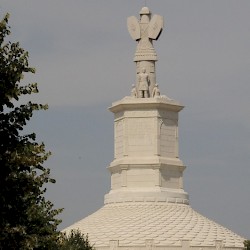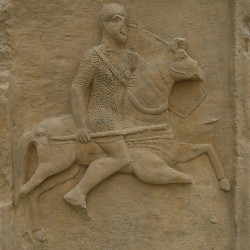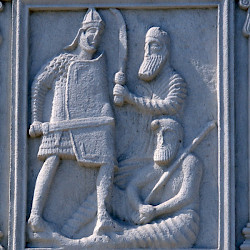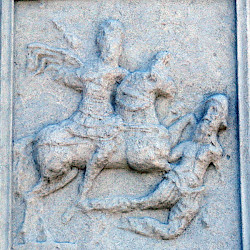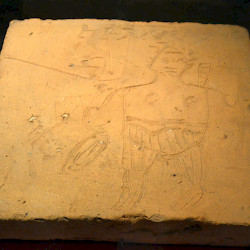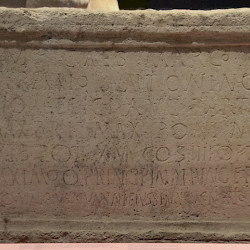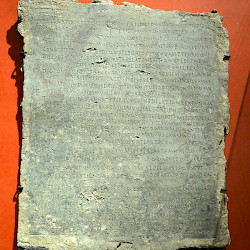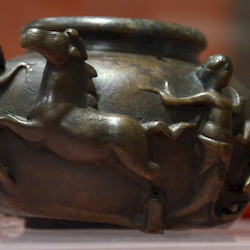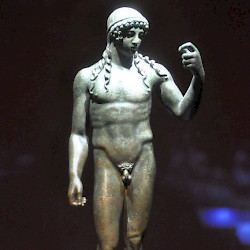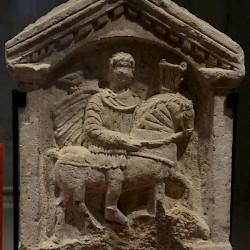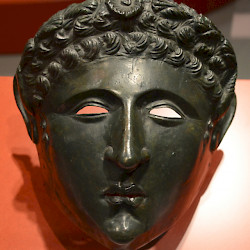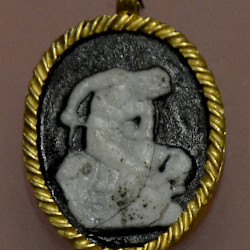Roman Dacia
Q971609Dacia: country north of the Lower Danube, more or less identical to modern Romania. It experienced influences from the Thracians, Scythians, Greeks, and Celts and became a powerful kingdom, added as a province to the Roman Empire (below), abandoned to Germanic-speaking tribes, and part of the Avar zone of influence.
Roman Conquest
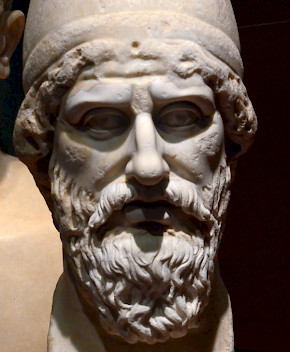
The war between the Dacian kingdom of Decebalus and the Roman Empire broke out in 85 CE. At first, the Dacians were succesful. The Twenty-First Legion Rapax was destroyed and the war demanded the personal involvement of the empeor himself. Domitian indeed went to the Danube and defeated the invaders.
A second war broke out in 101 and again demanded an emperor's personal attention. Trajan believed he had finished the war in 102, but in 105-106 he waged a new war. Dacia was conquered, its king Decebalus committed suicide, and the Romans celebrated their victory with a monument at Adamclisi, the founding of the city of Nicopolis, and (in Rome) the construction of the Column of Trajan, Trajan's Forum and the nearby Market Halls.
That the Dacians were a serious opponent can be deduced from a change in Roman armaments. The legionaries had good helmets, but they were not suitable for fighting people equipped with a so-called falx, a weapon that resembles a huge, slightly crooked, two-handed knife with which a Dacian warrior could split a legionary's helmet in two. The Romans therefore reinforced their helmets by placing two braces in a cross shape.
Roman Province
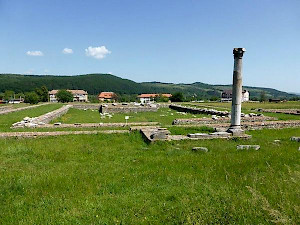
Although Dacia had been conquered and the Romans sent thousands of soldiers to defend it (V Macedonica in Troesmis and XIII Gemina in Apulum), it was never a secure part of their empire. There were "free Dacians" and several other enemies, including the Hasding Vandals, a Germanic tribe. The Romans organized and reorganized their new possession but never found a stable solution. For instance, V Macedonica was transferred to Potaissa, as a response to a new threat. Wars are recorded during the reigns of Antoninus Pius (r.138-161), Marcus Aurelius (r.161-180), and Maximinus Thrax (r.235-238).
The original capital, founded by Trajan, was Ulpia Sarmizegetusa, but later, the region was divided into three provinces: the Tres Daciae, on the north bank of the Danube Dacia Malvensis (capital Malva), in the center Dacia Apulensis (capital Apulum), and in the north Dacia Porolissensis (capital Porolissum).
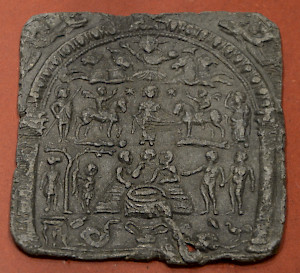
Roman engineers built new roads and cities. This was the normal thing to do, but the Romans faced an unusual problem: they could not appeal to the local elite. After all, many men had been killed in the wars and others had been enslaved. Instead, people from the Mediterranean were settled north of the Danube. Their language, Latin, is the predecessor of modern Romanian. Other settlers were veterans of the auxiliary units, including Batavians and Tungrians.
Still, the area remained exposed to enemy attacks. In the course of the third century, the Romans lost control of Dacia, and the emperor Aurelian (r.270-275) evacuated it. People were resettled in the south, on the other bank of the Danube, in what had been called Moesia and was now called Dacia Ripensis, "the Dacia on the river bank" (capital Ratiaria). Even further to the south was Dacia Mediterranea (capital Serdica), which was in former Thrace.
Late Antiquity
What had once been Roman Dacia was gradually infiltrated by Germanic tribes. This was the place where the ethnogenesis of the Tervingi/Visigoths took place. The emperor Valens (r.363-378) tried to restore Roman power, and did indeed celebrate a triumph, but in the end, the Visigoths successfully invaded the empire and defeated Valens in the battle of Adrianople (378). New settlers moved to former Dacia: Sarmatians, Huns, Avars.
Literature
- Ioana Oltean, Dacia: Landscape, Colonization and Romanization (2007)
